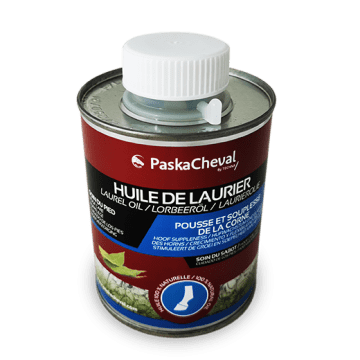On average, the hoof wall grows one centimetre per month from the area that is called the perioplic ring, very close to the coronet band. By helping to improve blood circulation in the foot, physical activity encourages this natural hoof renewal. Horse feed also does this as the combination of nutrients (minerals, proteins, vitamins, amino acids, fatty acids, trace elements, etc.) enables healthy hoof growth. If the horse has nutritional deficiencies, horn quality and growth may be affected. This is why, if the horn is not growing fast enough, which makes it more difficult for blacksmiths to do their job, a treatment with biotin is often recommended. Combining the needed micro-nutrients with the keratogenesis process, i.e. horn production, and biotin will help to strengthen and restructure the hooves and stimulate their growth. Administered as a food supplement, the treatment should be given over a period of several months. This is the case with Paskabiotin 2015, the biotin formulated by PaskaCheval.
In order to have healthy feet and good horn quality all year round, PaskaCheval supports owners and offers biotin and a full range of ointments and balms. Find them at your nearest distributor.







